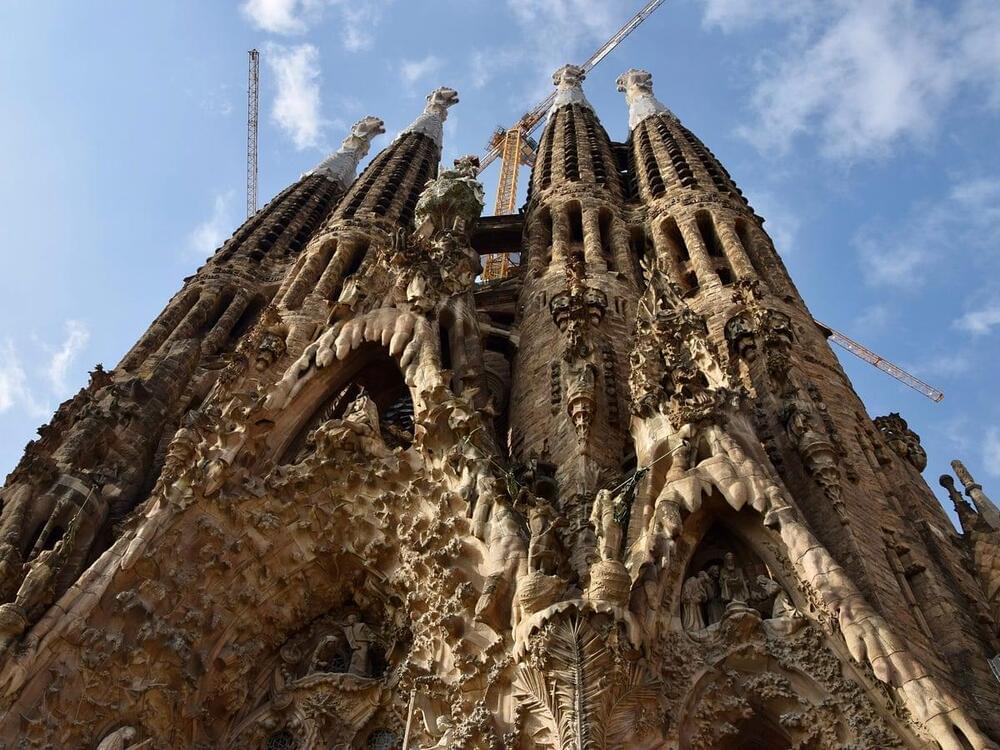We live in a four-dimensional Universe, where matter and energy curve the fabric of spacetime. But time sure is different from space!



I am restoring here some pages from the old version of the website turingchurch.com, which has been moved to Substack (please subscribe!). This is an archive of some old pages about the Order of Cosmic Engineers, a Turing Church precursor that was active before 2010.
See Chapter 2 of “Tales of the Turing Church” and references therein for the story of the Order of Cosmic Engineers.

Among “the jobs once done by God [that] can be done by natural entities” there is life after death. Dawkins “frequently affirms that there is no life after death”, but Steinhart shows that this is inconsistent with Dawkins’ own convictions. Dawkins “should have argued that false religious theories of life after death can be replaced with more plausible scientific theories of life after death” [**].
Steinhart describes two plausible scientific theories of life after death: promotion to the higher level of reality of the simulators, and revisions of entire lives in new universes, each better than the previous life and universe. Worth noting, promotion could preserve memories and implement “the ancient idea of the resurrection of the body.” These theories of life after death are only sketched in this book, see Steinhart’s previous book “Your Digital Afterlives: Computational Theories of Life after Death” for more. See also my review of “Your Digital Afterlives” in “Tales of the Turing Church” (Chapter 12).
In summary, Steinhart builds a thorough and philosophically consistent spiritual naturalism, inspired by Dawkins, which offers the main mental benefits of religion. I like (actually I love) philosophy, but I try to keep mine as simple and working-class as possible, because many people don’t have the patience (or the time) for too much philosophical sophistication. I think the two approaches are complementary. So I use the term “religion” for the spiritual naturalism of Dawkins and Steinhart, and I use the simple term “God” now and then.

I recently speculated on a toy model for scientific theology, with superintelligent God-like entities that live in the bare quantum vacuum. More speculations below.
This is not (yet) science — it’s far too vague and speculative to be called that — or theology. Call it science fiction (or “religion fiction” in the sense explored in my article “Religion Fiction Inspires Real Religion”) without the fiction. I guess I should write a science fiction story as a container for these speculations.
Therefore, I’ll often refer to superfluid vacuum theory (SVT) as “Cooper-Hofstadter theory” — a SVT that was featured in “The Big Bang Theory” TV show, of all things! Also, I guess Sheldon Cooper is more known than Leon Cooper.

The concept of Boltzmann Brain — a self-aware entity that emerges from random fluctuations in the fabric of reality— is intriguing. Perhaps God emerges from the evolution of a cosmic society of Boltzmann Brains?
I am referring to a generic “fabric of reality” but the concept can be formulated more precisely. For example, imagine a conscious, thinking being arising from random quantum fluctuations in the vacuum.
In the delightful “The Gravity Mine” short story, Stephen Baxter imagines the birth of a Boltzmann Brain:
I’m quite happy with this resolution of the conflict between determinism and free will…
By ‘free will’ do you mean ability to make an utterly random decision? But what is ‘utterly random’? If something’s unpredictable, it’s all but indistinguishable from being random, no?

Here’s another thing I have changed my mind on. Well, sort of. I used to make fun of “vitalism” and trade insults with my favorite archenemy Dale Carrico. Now I must repent or at least add important qualifications.
Vitalism is currently defined by Wikipedia as “the belief that living organisms are fundamentally different from non-living entities because they contain some non-physical element or are governed by different principles than are inanimate things.”
If we eliminate a few words from this definition we are left with a statement that I don’t disagree with:

Philosopher and science fiction writer Olaf Stapledon didn’t see the possibility of technological resurrection. Why? He had the building blocks for a physical theory of resurrection in mind, except one.
Stapledon was a deep, thoughtful and highly imaginative thinker, whose works are a source of endless inspiration for me. I consider “Star Maker” as a masterpiece of cosmic science fiction and theology.
In “Philosophy and Living,” Stapledon gives a cold shower (soberly and elegantly of course) to the idea of afterlife.
The smooth space-time fabric of reality seems to break down at very small scales, and become a fractal with infinite depth. New physics, with intriguing implications for metaphysics and theology, could be hidden in those fractal depths.
Smooth (continuous and differentiable) curves and surfaces become locally flat if you zoom-in deep enough. But fractals are always rough at all scales, and you can zoom-in a fractal forever.
In his seminal book “The Fractal Geometry of Nature,” Benoît Mandelbrot mentioned “a new fractal wrinkle to the presentation of quantum mechanics.”

CRISPR gene editing has made it possible to cure sickle cell disease, which affects millions worldwide, but most people with the condition won’t be able to afford the cost of the treatment.